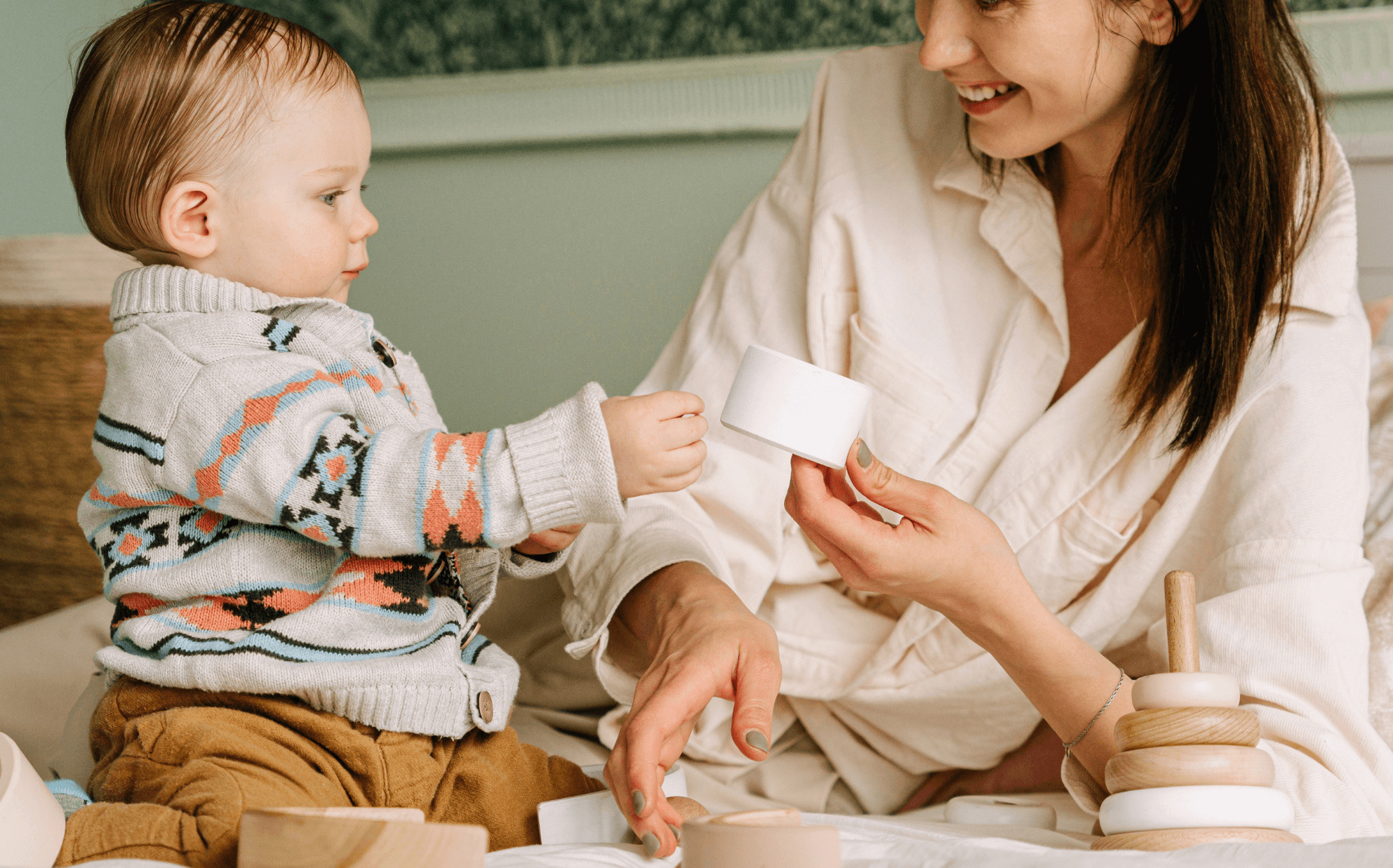The day to day logistics of motherhood can make it feel like one never-ending fog of overwhelm. And yet, how often do you run into someone who wants to tell you about how it “goes so fast” and how you’ll look back and these will be the “good old days”? If you’re anything like me, the answer is a lot!
What I try to do for myself and my clients is find ways of integrating mindfulness practices into daily life, making them practical and doable, so that there is more joy and gratitude right now—so that we’re not waiting to feel good until the kids are out of the house.
While it isn’t always perfect, I’ve found there to be several tools that work really well for increasing joy and gratitude in motherhood. Here’s a look.
Joy And Gratitude In Motherhood
If you want to increase joy and gratitude in your role as mom, here are seven tools that I use and suggest:
1. Look for small moments in the day.
All the planning, coordinating, calling, and list-making can lead to rushing from one thing to the next (or is it just me?). To combat this, I remind myself that the joy is in the NOW. The moment that is my son laughing and throwing the laundry while I’m trying to fold it, giggling as if it’s the most fun thing to do. Or the look he gives me when we’re snuggling after his nap time. It’s priceless. While I’m sure you notice these moments, you can take it a step further and really indulge in the feeling they create for you. Feel REALLY good when there’s a small moment, almost like your exaggerating it. We so often exaggerate the hard moments. This is about exaggerating the small moments in the very best way.
Resources:
- 10 Mindset Shifts For Moms (podcast)
- Perfectionism In Motherhood (podcast)
2. See life through your child’s eyes.
Some of the most joy I’ve experienced is when I see the awe and wonder through my child’s eyes. Have you noticed their beaming happiness for things that we so often don’t appreciate? For example, my son absolutely loves the bath. He has so much joy feeling the water, moving in it, getting clean, and splashing around. When is the last time you really felt present in the shower or bath and indulged in the feeling of the water? For me, I’m often thinking about my to-do list or whatever else is on my mind. Reminding yourself to experience life through the awe and wonder (and joy!) of your child can be really helpful in creating more joy and gratitude in motherhood.
Resources:
- Negative Thoughts As A Mom (podcast)
- How To Cope With Negative Thoughts As A Mom (free class)
3. Practice breath work.
Because there is so much to be in charge of as a mom, it can be easy to live in the future or the past, where your mind is constantly thinking about the mess ups from yesterday or the worries of tomorrow. Breath work is an amazing tool to help you redirect your mind back to your body and stay present. When you feel present and in the now, all your worries and fears go away (because worries and fears are all about the future or past).
A simple breath work exercise to get started with is to notice your breathing. Don’t try to change it. Don’t try to breathe deeper or slower. Just watch it. This will bring you into the present moment and more connected to yourself. Even if it’s just for 10 mindful minutes a day, this work is life changing. I talk more about 10 minutes of meditation in this Instagram post.
4. Feel your feelings, instead of trying to “fix” them.
I like to say that “feelings aren’t problems to be solved, they’re feelings to be felt.” So the next time you feel worried, remind yourself, “worry isn’t a problem to be solved, it’s a feeling to be felt.” This is helpful because it brings you back to your body, into the present, and allows you to process your negative emotions, instead of resisting them (which can lead to anxiety, or even panic attacks).
The overarching mindset shift that will help you relate to you feeling better is that all feelings are welcome (even the “negative” feelings like anger, frustration, sadness, etc.), but all actions are not. So you can feel anger without yelling, you can feel overwhelm, without rushing/busying around. Feelings are for feeling; they happen in your body (not in your mind and not in your actions). The better you get at processing feelings, the more joy you’ll experience in motherhood because the negative emotions won’t be such a problem.
To access my course on How To Process Feelings, join Grow You today.
5. Embrace your inner child.
It’s okay if you don’t like playing with your kids (I have a podcast on that here, by the way: If You Don’t Like Playing With Your Kids Podcast), and yet, there’s so much you can do to embrace play in a way that feels comfortable to you. The key to getting more comfortable with play is “yes and” (something I learned during my theater and improv days in college). When someone is offering something, you say “yes and” in improv. So if your child comes up to you and starts barking, “yes and” would look like you barking back and potentially adding an “and” onto that where you change the barking to talking. This will validate your child’s experience of play and it will make playtime more joyful for you.
6. Gamify mundane tasks.
A lot of the daily tasks of managing a family and home can be “boring” or mundane because they don’t require a lot of thinking. It’s not a huge mystery how to do laundry, clean the kitchen, or go to soccer practice. The brain really likes a little bit of a challenge. Now, too much challenge is overwhelming, too. It has to be just the right amount to be fun. That’s why people play games or do puzzles—they intentionally create a challenge for you in a way that’s fun.
You can do this with your home to bring in a little more joy to your days for the mundane tasks. Make anything that’s a bit boring into a game. For example, you might decide that every time you wipe down the counter you get a little reward (whatever the reward of your choice is). Or for every five diapers you change, you get something else. Gamifying mundane tasks in your life is a way to add in a bit more joy.
Resources:
- Feeling Like You’re Just A Mom (podcast)
- 75 Journal Prompts For Moms (free download)
7. Say “yes” more often.
By the nature of kids not having fully developed brains, there is so much we have to say no to just to keep our kids safe and alive. Try to add intentional “yeses” to your day to increase joy and gratitude. For example, if your kids ask for something that is safe but normally you would say no to, pause and ask if you like your reason. One of my friend’s daughters wanted to dye her hair pink and her default was to say no, but after doing this work, she decided to say yes. See how many safe “yeses” you can add into your day to build joy and gratitude.
A Final Note
Personally, I find it easy to feel joy and gratitude out of the moment. For example, if it’s the evening, everyone is in bed, and I’m looking through photos, I feel so much joy and gratitude for my life and being a mom. But the work is to take those feelings and embrace them in the moment, in the middle of the day, when life is happening. Of course there will be times you don’t want to choose joy and gratitude (when there are sad or really difficult times), but for the ordinary days, instead of rushing through them, pausing and using these practices to feel more joy and gratitude can make a huge impact on how you experience your life.



